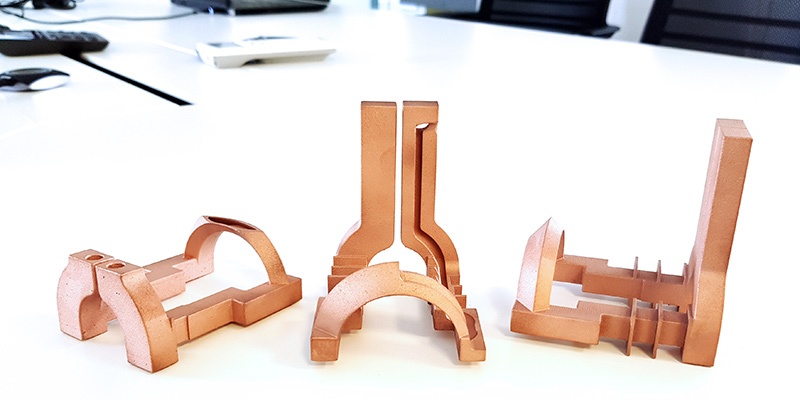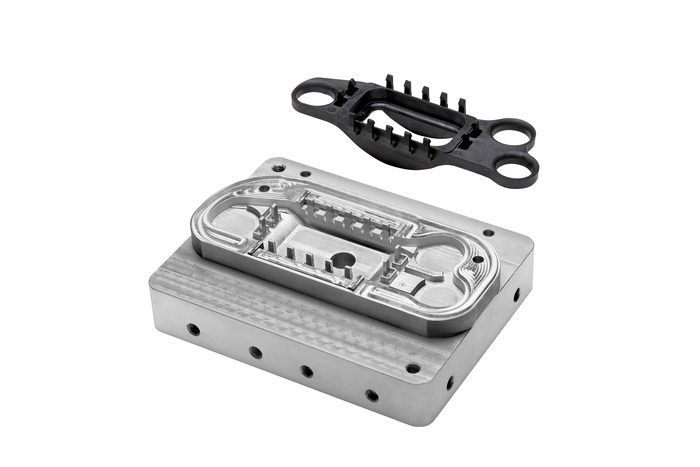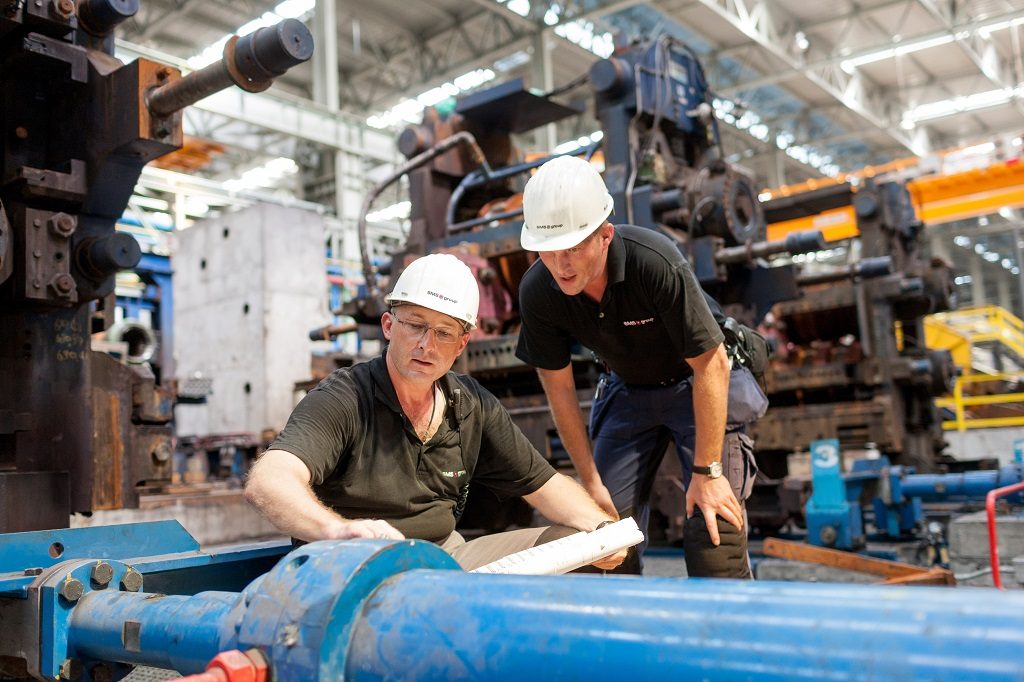The State of 3D Printing in Industrial Goods, Part Two
In the last part of this series, we discussed a variety of general industrial product manufacturers that have begun to adopt 3D printing along the road from prototyping to end part manufacturing. Now, we’ll begin to look at service bureaus that 3D print general industrial goods for their customers. Because there are a number of service bureaus capable of producing parts for industrial product makers, we’ll limit our exploration to just those who market themselves for industrial goods specifically, or are otherwise aligned in such a way that they are already close to the industrial sector.
Kennametal is a tooling and materials supplier that has found a position in the AM space as a metal powders and AM services provider. The company makes powders for metal powder bed fusion (PBF), directed energy deposition (DED) and bound metal 3D printing (think Markforged and Desktop Metal’s desktop metal systems). These materials include gas-atomized cobalt, nickel and iron alloy powders (Stellite, Nistelle and Delcrome).

A 3D-printed valve cage made from Kennametal’s Stellite 6-AM-K powder. Image courtesy of Kennametal.
Kennametal has been 3D printing prototypes and cutting tools for some time, but took things a step further in fall of 2019 with the establishment of a Kennametal Additive Manufacturing business unit. The AM division will help customers through the entire process of securing materials, designing parts for 3D printing, and provide series production relying on binder jetting and PBF. An example component described on the unit’s website is a valve cage 3D printed for IMI Critical Engineering, which supplies flow control systems for industrial processes.
Aidro is an Italian company that makes hydraulic valves and systems for a variety of industries. The firm uses metal PBF to 3D print end-use parts that are up to 85 percent lighter than traditionally made counterparts. Other capabilities developed by Aidro include the ability to combine subcomponents into one single printed unit, improve performance over traditionally made parts, and take up less space than conventionally fabricated components.
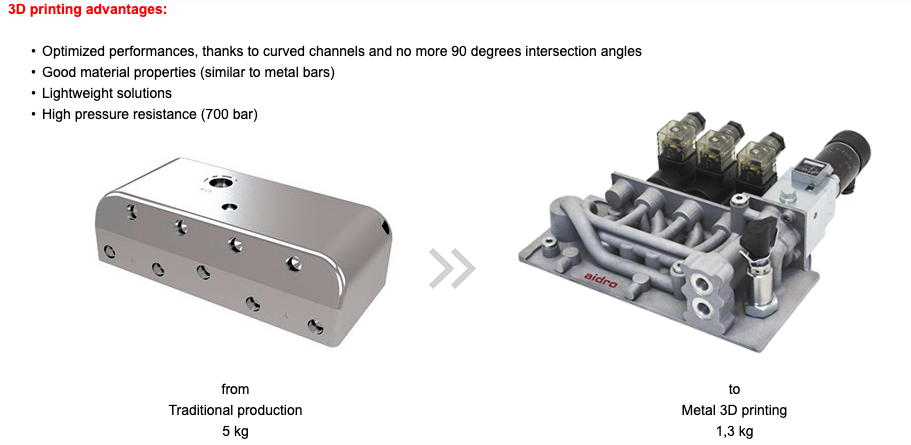
A comparison between a traditionally made hydraulic manifold and one redesigned for 3D printing. Image courtesy of Aidro.
HP’s partners GKN Additive and Parmatech will likely play increasingly important roles in AM for the industrial sector through the use of HP’s MetalJet 3D printers. Parmatech is a metal injection molding provider, which focuses on the medical and industrial sectors. Though GKN Additive is somewhat focused on aerospace and automotive parts, given the specialties of its parent company, GKN, it manufactures metal powders for AM and provides 3D printing services more broadly, augmented by its more recent acquisition of Forecast3D.
In particular, the company is tackling copper induction coils, which are used in the automotive and industrial sectors for tempering metal components to make them harder. In addition to allowing for the production of complex, custom copper inductor coils, 3D printing is actually a more repeatable and reliable process for fabricating these parts because the heat treatment phase is built into the production step.
GKN is not alone in this space, however. As niche as the application is, PROTIQ, a subsidiary of German industrial manufacturer Phoenix Contact, has an online configurator for customized copper induction coils, which it can 3D print as a part of is its larger 3D printing services. Additionally, the company offers optimized tooling for injection molding. 3D Inductors is another business that is entirely dedicated to 3D printing copper induction coils.
Though it does not offer its services through an online marketplace, NXCMFG is a service provider that focuses specifically on 3D-printed tooling. Using design and weight optimization, the company is able to 3D print metal molds and inserts with conformal cooling channels that reduce injection molding cycle times between 20 and 80 percent.
In addition to its metal powder production, Swiss engineering conglomerate Oerlikon’s AM division provides 3D printing services. While it can lean on its expertise across a number of verticals, Oerlikon AM boasts 20 years of experience in toolmaking and general industrial products. Examples on its website range from injection molding tools to a heating sleeve and a heating plate with built-in cooling channels and reduced part count.
DM3D is a manufacturer of directed energy deposition (DED) machines that also provides 3D printing services. Like many DED companies, DM3D markets its technology for both part fabrication and repair. This includes pumps for the agricultural industry, hardfacing cutting implements, and high productivity tooling. DED is capable of 3D printing with multiple metals, with which DM3D uses to produce tooling.
Carpenter Technology Corporation (CarTech) is metals company that has been increasing its stake in 3D printing, first by purchasing titanium powder company Puris, then by acquiring an electron beam melting service provider, CalRAM. Along with Proto Labs and Burloak Technologies, an engineering and manufacturing company, the two service providers have become part of the GE Additive’s Manufacturing Partner Network. All three companies perform AM of industrial goods and have expertise related to all forms of manufacturing. This, along with GE’s close ties to the industrial sector, will likely make the entire network an important component in production of industrial parts.
With headquarters in Austria, voestalpine in an important player in the industrial goods sector, providing AM services as a part of its international steel products manufacturing. In addition to developing metal powders for AM, the company has opened a new AM research institute in Taiwan, a production plant in Canada, and an AM center in Singapore. Aside from making products for just about every sector, voestalpine also manufactures molding and tools, highlighting the ability to 3D print molds with built-in conformal cooling.
Through a majority acquisition in AM service provider Materials Solutions, Siemens is now a 3D printing bureau. With a number of EOS metal PBF systems, the company has an established history in metal 3D printing dating back to 2006. Among the sectors it serves, Materials Solutions highlights the 3D printing of tooling from high-temperature super alloys and featuring conformal cooling.
U.K. engineering company Renishaw has its own line of metal PBF 3D printers, as well as Global Solutions Centres in which customers can begin their journey of AM adoption. As a part of this journey, clients can lease Renishaw machines or have parts printed as a service. Along with its expertise across a number of verticals, Renishaw offers 3D printing for industrial tooling and end parts. As we mentioned in our previous installment, Renishaw 3D printed screw-in milling cutters for KOMET Group in Germany.
SMS Group, which recently partnered with Additive Industries for the development of its serial production 3D printers, developers metal powders for AM and offers 3D printing services. Among the parts it has 3D printed for the industrial space are an SIS injector for electric arc furnaces, a PSM roll cooling ring for metalworking, and a 3D-printed multi-nozzle spray head for die maintenance.

Previously welded from 18 different parts, this SIS injector is now made up of a single 3D-printed part and takes up 50 percent less space. Image courtesy of SMS Group.
Jabil is another service provider worth mentioning, given its size and the fact that it is an early adopter of HP’s Multi Jet Fusion (MJF) technology for mass production. After using Ultimaker printer farms in-house for printing jigs and fixtures on its assembly line, the contract manufacturer began using MJF, with HP itself as an early customer. The company 3D prints 50 polymer parts for HP’s printers.
In addition to the companies described here, there are a number of large AM service bureaus that you may already be familiar with that are involved in 3D printing tooling for the industrial sector. These include Stratasys Direct Manufacturing, Protolabs, Xometry, Materialise, Digital Metal, FIT AG and 3D Systems.
In the next installment in this series, we will take a look at some of the 3D printer manufacturers already providing systems for manufacturing industrial goods or primed to take advantage of that sector as it evolves.
The post The State of 3D Printing in Industrial Goods, Part Two appeared first on 3DPrint.com | The Voice of 3D Printing / Additive Manufacturing.
Additive World Conference 2019 Eindhoven Day One
Additive World Conference is a great conference in Eindhoven focusing on metal 3D printing. Organized now for the seventh time by metal 3D printer OEM Additive Industries, the summit brings together people interested in metal 3D printing from all over the world. With around 200 participants the show is small scale but the speakers are high caliber coming from the forefront of using metal printing in manufacturing. If you’re a firm interested in industrializing Additive Manufacturing/3D printing, I’d recommend attending this small but high impact conference. The Additive World Conference is now a two-day event with the first day focusing on speakers at a conference center and the second day focusing on a visit to Additive Industries and their manufacturing and R&D facilities.
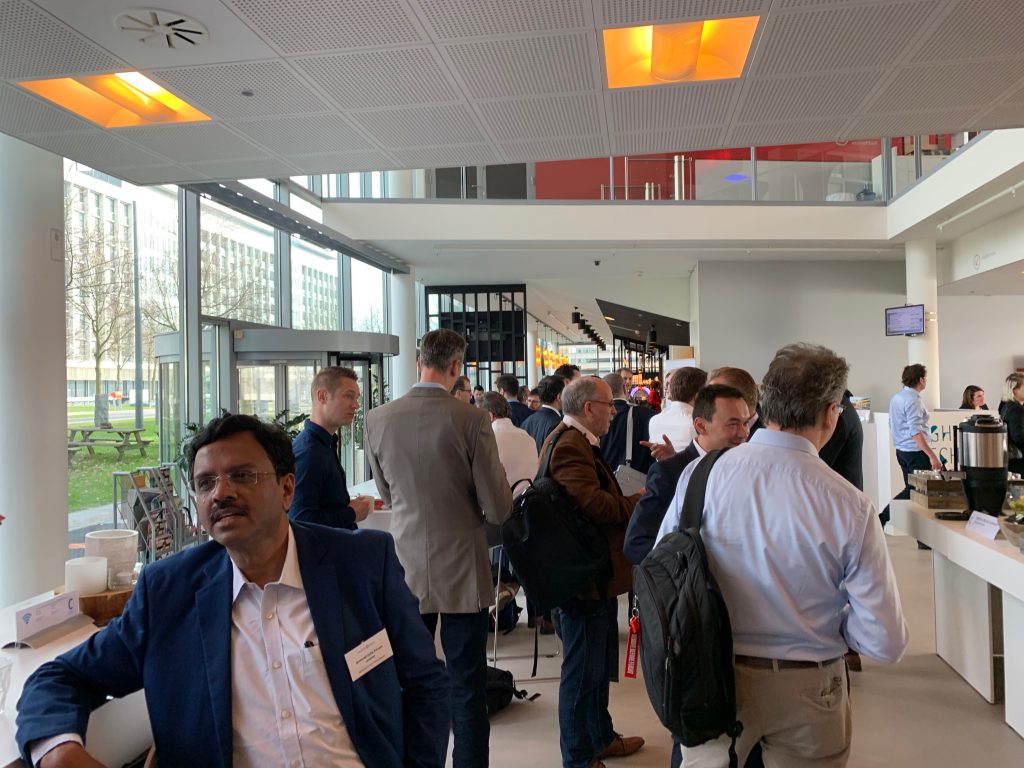
At the beginning, Additive Industries co-founder and CEO Daan Kersten welcomed us to the event and there was a rather loud and bombastic movie. The first speaker was Manuel Michiels of Materialise and he spoke on Breaking Through the AM Case Barrier with Software Simulations and Automations. Manuel wanted to show how Materialise software is saving firms money in metal 3D printing. The presentation was full of interesting assumptions and calculations that gave a real insight in the cost structure of metal AM. He took us through a detailed cost analysis of EBM. He assumed that if you have a good utilization of 70% of your build volume you could do a 186 builds per year. He also assumed that the software prepping would take 300 minutes and the hardware preparations on the machine would take a 180 minutes. The build itself would take 30 hours and afterwards there would also be another 180 minutes hardware work which would include resurfacing the build plate. He assumed that the initial post-processing steps would cost you thirty minutes for HIP (Hot Isostatic Pressing) and a further 230 minutes to remove the support from parts and remove them from the build platform. He assumed a depreciation over five years for the printer and concluded that labor, the machine, and powder were the highest cost factors. Taking all of this into account he came up with a full build cost of 2322 euros ($2637). This is a great number to input on some spreadsheets to find out if 3D printing could make sense for your business case. The yearly costs were estimated to be 431,384 Euros per year which is much higher than some previously published operating cost numbers but in my mind a more realistic number. I would say that they didn’t take into account further processing such as tumbling and other surfacing steps but since these can vary enormously per part and application I understand why they didn’t include it.
He then went on to talk about how time on the machine is “holy” and all you can do to optimize parts and workflows will save you later on in the process. Some results that he could share was that selected customers had a 90% decrease in total data preparation time and a 20% decrease in powder consumption. He also disclosed that support failure in the number one issue that causes scrappage in 3D printed parts. Indeed a lot of builds fail due to support strategies. Recoater collision, also called recoater bump, was the next biggest cause of machine failure. This occurs when the recoater spreading out material hits the part and damages it. We mention and show you how to optimize to reduce that in in your metal 3D printing builds here. The third biggest cause was shrinklines in the part. He assumed that a varied production line may have a scrap rate of 15% which would mean an annual cost of 50,000 per machine. They managed to reduce this to 7.5% in select customers. We must point out that 15% is very high and one would not expect such a number in a setting where a firm is producing millions of similar parts. If you’re making millions of bridges and crowns, for example, their similarity would mean significantly lower scrap rate. Materialise itself is focusing very much on the disparate parts of Industry 4.0 the 3D printing software leader wants to connect PLM, distributed manufacturing and machine learning. By tying together 3D printing and existing businesses processes the company surely can help others integrate 3D printing into manufacturing.
Next up was Valeria Tirelli the CEO of Aidro. We mentioned before how Aidro is using 3D printing to make better hydraulics and how the firm made a better manifold for a Jaws of life through 3D printing and how they won last years Additive World Design for Additive Manufacturing Challenge. Aidro is an Italian family-owned firm that has looked at the hydraulics industry in a new light through 3D printing. Valeria mentioned that hydraulics has been the same for decades and showed some advertisements for hydraulics from the forties which looked remarkably similar to hydraulics today. She said that by implementing 3D printing they have been looking at how they generate ideas and products differently. They now focus on problem-solving and how to create “new shapes” that solve problems in completely new ways. “Thanks to new additive design, new shapes are now possible.” This changed the firm’s entire design approach and now “new solutions that seemed impossible are possible.”
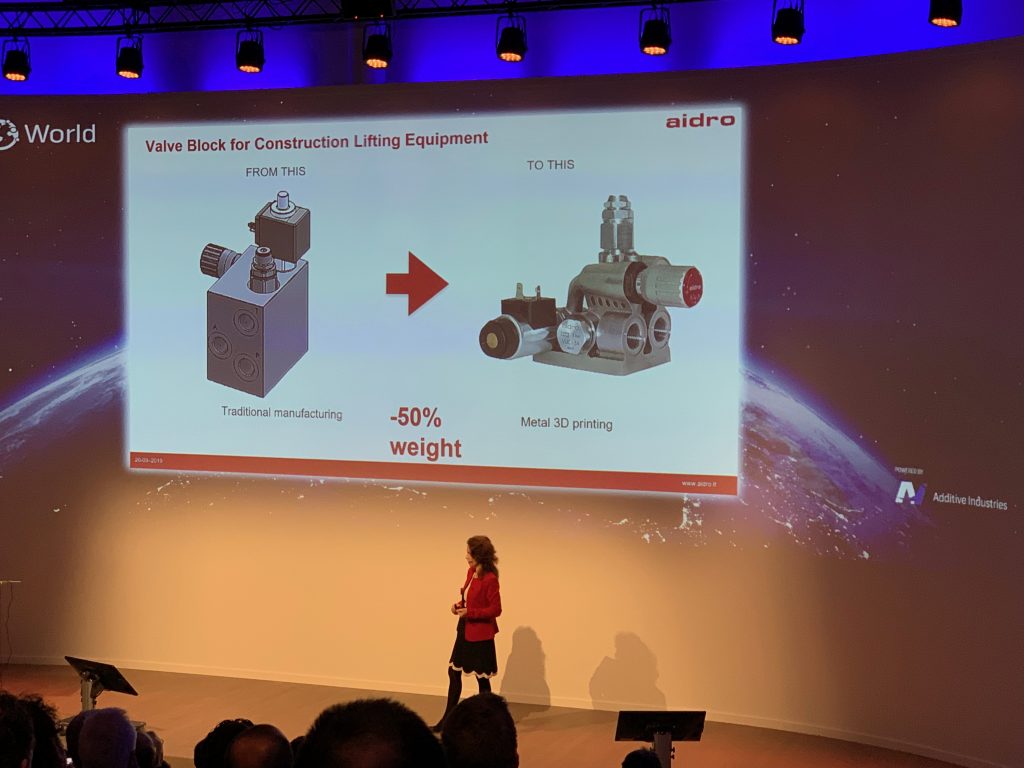
One of the biggest impacts for them in hydraulics means that whereas traditionally channels are limited in how they can be designed and made this design area is now expanded. The channels in the parts which guide the flow of the liquids through the part are essential in determining the performance of the hydraulic component. Traditionally hydraulic components had a lot of right-angled components and channels. This meant that there was a reduction in flow and turbulence in the liquid. Flow determines the overall performance of the hydraulic part or manifold. Now with 3D printing, we can get round and curved channels inside of these parts which means that their performance is greatly enhanced. Rather than flow being interrupted by abrupt right angles that create turbulence, smooth channels guide liquids around curves and bends in a much more efficient way. The results are more flow and less turbulence.
In some cases Aidro has increased flow from 30% to 70% for example. The company now has changed its design approach to start with the functionality of a part, then they connect the channels and later make ports and cavities to complete the part. With one example part they were inspired by a pepper to make a part with a 50% weight saving and a 40% improvement to flow. Another manifold was inspired by a fennel to have a weight reduction of 70%. In a heat exchanger, they accomplished a 80% weight saving and reduced the overal part length from 1.5 meters to 20 centimeters. Valeria’s presentation was very exciting and points to a huge impact that 3D printing could have over the production of millions of hydraulic systems.
Dr. Tobias Brune of SMS group was next and he presented on the companies new test atomization plant. SMS’s atomization plant lets them produce their own 3D printing powders. He mentioned that there are over 6500 kinds of steel but that the 3D printing industry only uses very few of these. Their own atomizer lets the firm make and test many different metals and produce them on demand close to their plant. The design and manufacturing of their own atomizer is a huge investment for the German automotive manufacturing firm. It is insane in the cost outlay but indeed the only logical approach if you want to manufacture with 3D printing. With so much of the cost coming from overinflated material prices building an atomization plant will have huge speed and cost advantages in the long run. SMS Group is one of the most interesting firms in 3D printing at the moment. The company is making huge investments in trying to create turn key 3D printing plants for large scale manufacturing. Currently, there simply is no solution for a large company that wants to build a plant to 3D print millions of things. Your solution would be to learn on the job and take years. With SMS an automotive firm could work with them to quickly build or create a manufacturing solution. The firm wants to go further into “equipment as a service” and their Scale$Series turnkey 3D printing plants.
Dr.Kristian Arntz of ACAM Aachen Center for Additive Manufacturing and Fraunhofer IPT spoke about the Fraunhofer center at the University of Twente and how they’re expanding a network of research partners. Professor Ian Gibson of the Deptment of Design Production Management at the University of Twente spoke on the machinability of 3D printed parts and the custom creation of porous structures. With the creation of customized controlled porosity part performance can be enhanced. He made the point that most 3D printing implementation are because you want to either change your product or change your process or both. Additionally one could use 3D printing to “provide agility” by “reconsidering the entire process.” He reiterated that the wrong method would be to buy a printer first but partnering and understanding would a more fruitful approach.
3D Printing News Briefs: November 28, 2018
We’re starting with some business news in today’s 3D Printing News Briefs, and then moving on to an award. A British company is the first automotive consumer retail brand built entirely around 3D printing, which is a pretty big deal. Oerlikon has a new online instant quoting and tracking tool, while MakePrintable has released some new updates and Additive Industries is launching a new center in Singapore. Finally, the SMS Group has won a prestigious award.
First Automotive Consumer Retail Brand Built Around 3D Printing
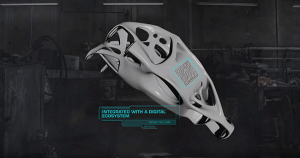 Leeds-based digital manufacturing company Carbon Performance uses 3D printing, artificial intelligence, and blockchain to design and fabricate lightweight, next-generation automotive components that are environmentally sustainable. Recently, the company designed an suspension upright for a Lotus Elise sports car that was 3D printed in aluminum. The part, with an organic design, ended up being 25% more lightweight and was consolidated from a total of nine parts into just one.
Leeds-based digital manufacturing company Carbon Performance uses 3D printing, artificial intelligence, and blockchain to design and fabricate lightweight, next-generation automotive components that are environmentally sustainable. Recently, the company designed an suspension upright for a Lotus Elise sports car that was 3D printed in aluminum. The part, with an organic design, ended up being 25% more lightweight and was consolidated from a total of nine parts into just one.
But what really sets Carbon Performance apart is that it packages up its 3D printed automotive components and retails them to end customers, which technically makes the company the first automotive consumer retail brand in the world that’s built entirely around 3D printing. Take a look at its short promo video below:
Oerlikon Offering New Online Tool
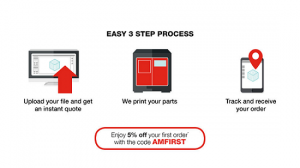 Swiss technology and engineering group Oerlikon is now offering a new online tool to help its customers save time with their on-demand manufacturing and rapid prototyping needs. The company is offering an online instant quoting and tracking tool that’s capable of handling a large variety of metal and polymer part needs.
Swiss technology and engineering group Oerlikon is now offering a new online tool to help its customers save time with their on-demand manufacturing and rapid prototyping needs. The company is offering an online instant quoting and tracking tool that’s capable of handling a large variety of metal and polymer part needs.
The tool is easy to use – just upload your CAD file and prepare your part for 3D printing by choosing from available options. Then, Oerlikon will 3D print your part, and you can track the order until it’s sent quickly right to your door. The company is even offering a discount for the first order you place in its new service through December 31st, 2018. Simply enter the promo code AMFIRST in the Oerlikon AM online quoting tool to take advantage of the deal.
MakePrintable Releases New Updates
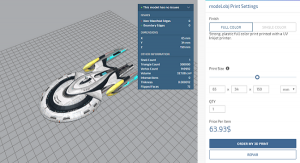 Speaking of tools, the MakePrintable service launched by San Francisco startup Mixed Dimensions back in 2014 has just released a few major updates. It already offers such services as easy, automated 3D file fixing and better user efficiency in 3D printing, and is now rolling out its latest – a pay per download service and a full color 3D printing service. The first lets customers repair files, then pay if they’re pleased with the quality, without having to purchase a subscription, while the latter service is able to produce “unmatched quality prints at competitive pricing compared to others in the industry.”
Speaking of tools, the MakePrintable service launched by San Francisco startup Mixed Dimensions back in 2014 has just released a few major updates. It already offers such services as easy, automated 3D file fixing and better user efficiency in 3D printing, and is now rolling out its latest – a pay per download service and a full color 3D printing service. The first lets customers repair files, then pay if they’re pleased with the quality, without having to purchase a subscription, while the latter service is able to produce “unmatched quality prints at competitive pricing compared to others in the industry.”
“When we designed our printing service we focused heavily on all pillars (quality, speed and cost) as we know how much expensive and problematic it is to get quality prints and even to get past most 3D printing services checkout process,” Baha Abunojaim, Co-Founder and CTO of Mixed Dimensions, told 3DPrint.com. “At MakePrintable we guarantee our users a smooth and fast experience with a competitive pricing point while also leveling up the quality thanks to our years of research and robust file preparation technology.”
Additive Industries Announces New Center in Singapore
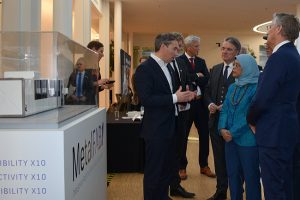 After an official State Visit from Mdm Halimah Yacob, the President of the Republic of Singapore, to its Eindhoven headquarters, Additive Industries announced that it would be building a Process & Application Development (PAD) Center in Singapore. The company plans to build its newly launched PAD Center up into a regional Asia Pacific hub for customer support and local development. The PAD Center will also serve as a competence center for the industrialization of metal 3D printing within the company itself, with special market focus on important regional verticals like semiconductor equipment and aerospace applications.
After an official State Visit from Mdm Halimah Yacob, the President of the Republic of Singapore, to its Eindhoven headquarters, Additive Industries announced that it would be building a Process & Application Development (PAD) Center in Singapore. The company plans to build its newly launched PAD Center up into a regional Asia Pacific hub for customer support and local development. The PAD Center will also serve as a competence center for the industrialization of metal 3D printing within the company itself, with special market focus on important regional verticals like semiconductor equipment and aerospace applications.
“Singapore is an ideal stepping stone for Additive Industries’ growth ambitions in the Asia-Pacific region,” said Daan Kersten, the CEO of Additive Industries. “It is a natural hub with great infrastructure, it’s an excellent fit with our target markets and the governmental support accelerates our execution.”
3D Printed Spray Header by SMS Group Wins Award
 A group of companies that’s internationally active in plant construction and mechanical engineering for the steel and nonferrous metals industry known as the SMS Group just announced that it won the German Design Award 2019, in the Industry category, for its 3D printed spray head for forging plants. This is likely the first time a small machine component like the spray head, which is used to cool dies in forging presses, has won one of these awards, so it’s a pretty big deal. The 3D printed spray head is the result of a joint effort between the group’s Forging Plants Department, Additive Manufacturing Project Team, and simulation technology experts. While it is a small component, it’s certainly mighty – it was designed to fulfill its function in the most efficient way possible. 3D printing helped to make the spray head smaller, less expensive, easily customizable, and made it possible to add flow optimized channels for cooling die heads.
A group of companies that’s internationally active in plant construction and mechanical engineering for the steel and nonferrous metals industry known as the SMS Group just announced that it won the German Design Award 2019, in the Industry category, for its 3D printed spray head for forging plants. This is likely the first time a small machine component like the spray head, which is used to cool dies in forging presses, has won one of these awards, so it’s a pretty big deal. The 3D printed spray head is the result of a joint effort between the group’s Forging Plants Department, Additive Manufacturing Project Team, and simulation technology experts. While it is a small component, it’s certainly mighty – it was designed to fulfill its function in the most efficient way possible. 3D printing helped to make the spray head smaller, less expensive, easily customizable, and made it possible to add flow optimized channels for cooling die heads.
“Winning the Design Award makes us extremely proud. It is recognition of many teams within SMS group whose work is characterized by a highly interdisciplinary approach,” said Axel Roßbach, Research and Development Extrusion and Forging Presses with the SMS group GmbH. “The spray head is a milestone innovation marking a new era in the design of plant and machine components, enabled by the game-changing potential of 3D printing and function-optimized design. The design of a machine part is today no longer limited by the constraints imposed by conventional – process-optimized – forming and machining techniques. Supported by latest software and computer technology, we can now give a component exactly the design that fulfils its designated function in the best possible way. Another important aspect is that we have used new materials. Therefore the Award honors not only a new design, but above all the new way of thinking lived within SMS group, which has materialized in a global approach to Additive Manufacturing.”
Discuss these stories and other 3D printing topics at 3DPrintBoard.com or share your thoughts below.
SMS Group Helps Customers Digitalize Through 3D Printing and Other Tech
![]() German family-owned business SMS Group works with metal companies to develop solutions for new plants, modernized or digitalized plants, and more. The company just reported strong numbers for the last quarter, and is looking ahead to a busy and productive remainder of 2018.
German family-owned business SMS Group works with metal companies to develop solutions for new plants, modernized or digitalized plants, and more. The company just reported strong numbers for the last quarter, and is looking ahead to a busy and productive remainder of 2018.
“SMS group is the world market leader in plant and mechanical engineering for the steel and non-ferrous metals industry,” said CEO Burkhardt Dahmen. “We have worked hard to sustainably strengthen our position as the most modern and efficient company in the industry. Above all, we owe this to the extraordinary dedication of our employees.”
SMS Group is a leader in digitalization, and has developed a concept known as the “Learning Factory” in which humans and machines work together in an intelligent and largely autonomous production environment. Recently, SMS Group commissioned a “Learning Steel Mill” for Arkansas customer Big River Steel, which was developed jointly with the customer. It has thus far met all expectations in practice, and SMS Group recently received approval for an extension stage.
The company is investing further in the production and processing of new high tech materials and intelligent environmental technologies. Its activities are being bundled in a company-wide strategy program called “New Horizon,” for which the first customer projects have already been successfully completed. These projects include the world’s first “UrbanGold plant,” which is a new type of system that allows valuable, high-purity precious metals such as copper, nickel, gold, silver and platinum to be economically recovered from scrap metal such as printed circuit boards in laptops and phones. Through Urban Gold precious materials could be reclaimed close to where you or I live. At the moment such circuit boards are sent half way around the world where the entire PC or laptop are often burned in order to extract the precious metal.
SMS Group is also working on the production of high-purity metal powders for additive manufacturing. The company recently built and commissioned an industrial pilot plant to produce metal powder with microscopically small homogeneous spheres. In addition, SMS Group is building a demo center for the entire process chain of additive manufacturing, from metal powders to end products.
Further innovation is coming from the Paul Wurth Group, which is part of the SMS Group. The company has developed a new solution for decentralized energy generation that involves W2E (Waste-to-Energy) and B2E (Biomass-to-Energy) plants, as well as combined heat and power plants that are used as environmentally friendly and resource-saving energy sources.
“Quality work and innovation are our most important characteristics,” said Dahmen. “Our customers expect precision in their implementation and creativity in solving the most complex problems. We are also making use of these strengths in the further development of the SMS group itself. With ‘New Horizon’ and our digitalization offensive, we have launched a sophisticated growth program that will sustainably strengthen our company’s leading position.”
Worldwide, SMS Group has about 13,500 employees who generate sales of more than €3 billion. The corporation is made up of a group of companies located on five continents. As a whole, the group is a forward-thinking, technologically-minded corporation that works with a number of resources, including additive manufacturing, to help companies become more efficient, ecological and productive. Projects such as the Learning Factories, New Horizon and the UrbanGold plant are examples of how SMS Group is helping its customers move forward through technology.
Involvement in 3D Printing from firms with deep expertise in manufacturing will lead to the expansion of all of our capabilities.
Discuss this and other 3D printing topics at 3DPrintBoard.com or share your thoughts below.
[Images: SMS Group]

